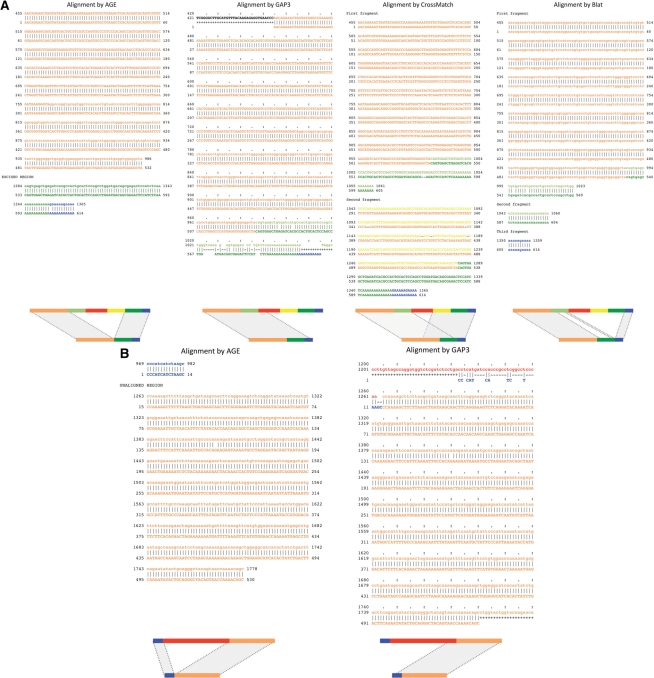Fig. 5.
Comparison of assembled contig alignments in the region of predicted deletions. The first line in each alignment is the sequence for the genomic region, while the second is for the contig sequence. Nucleotide numbering is sequential, starting from one in both compared sequences. Each alignment is accompanied by a schematic representation underneath. (A) The predicted deletion is chr20:2,969,769-2,970,056. The contig that is 614 bp in length has been aligned by the AGE, GAP3, CrossMatch and Blat programs to the predicted region of deletion, which is extended by 1 kb in each direction, i.e. from 2,968,769-2,971,056. The first sequence (genomic region) has two pairs of homologous sequences: orange to yellow and dark green to light green. AGE alignment clearly identifies a large unaligned region, confirms a predicted deletion, and derives deletion breakpoints as chr20:2,969,756-2,970,052 (coordinates are for the first and the last deleted bases). Note that the resulting breakpoints are in excellent agreement (within 13 bp) with the prediction. No other program was able to produce the correct alignment. (B) Predicted deletion is chr8:118,292,728-118,292,987. The contig of 530 bp in length has been aligned by the AGE and GAP3 programs to the predicted region of deletion, which is extended by 1 kb in each direction, i.e. from 118 291 728 to 118 293 987. AGE alignment clearly identifies a large unaligned region, confirms a predicted deletion, and derives deletion breakpoints as chr8:118,292,711-118,292,990 (coordinates are for first and last deleted bases). GAP3 is not able to align the left flanking sequence, as the penalty for a long gap outweighs the matches at the left flanking sequence. All coordinates are for human hg18 reference.

